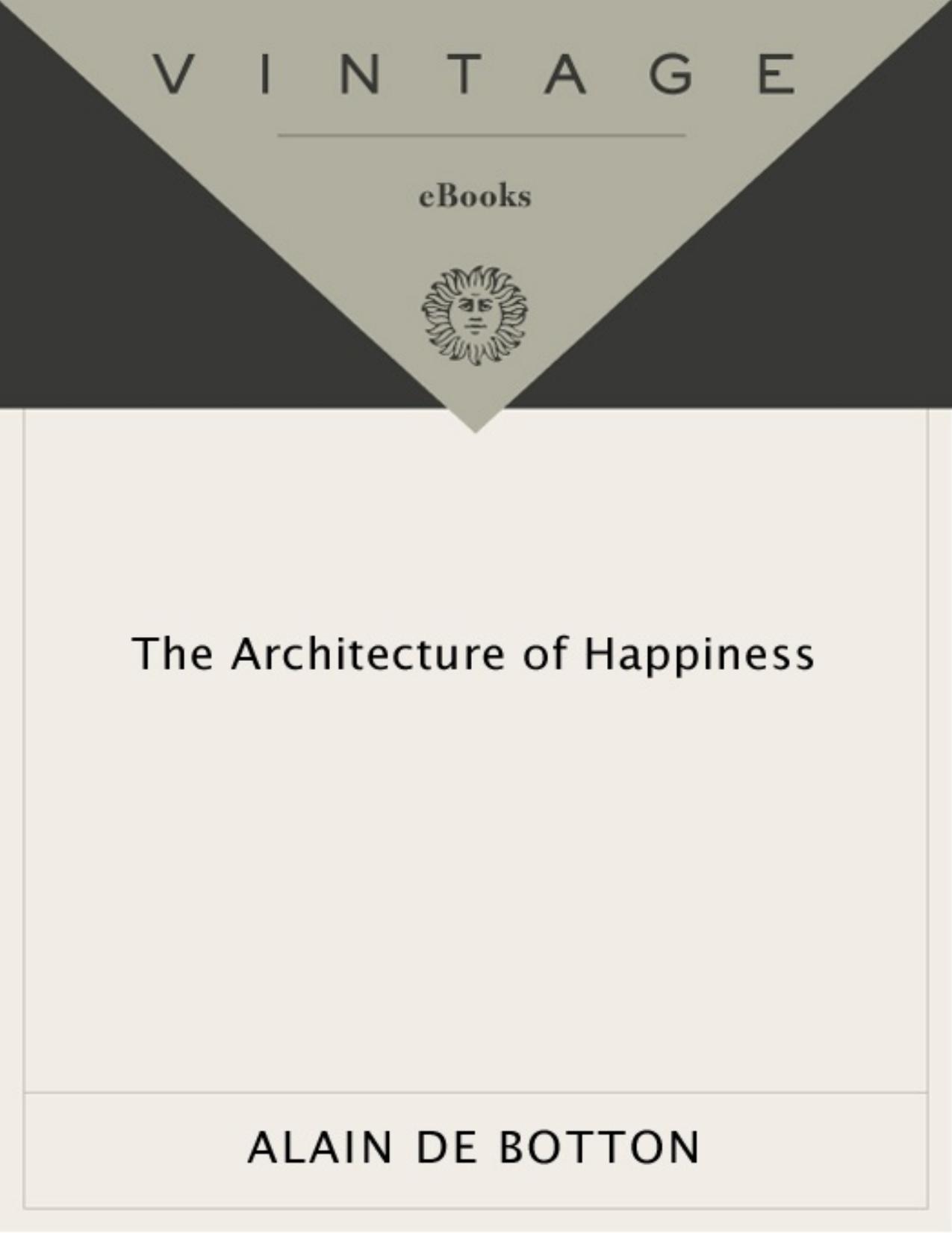The Architecture of Happiness by Alain De Botton

Author:Alain De Botton [Botton, Alain de]
Language: eng
Format: epub, mobi, pdf
ISBN: 978-0-307-48156-6
Publisher: Knopf Doubleday Publishing Group
Published: 2011-05-10T16:00:00+00:00
2.
Why do we change our minds about what we find beautiful?
In 1907 a young German art historian named Wilhelm Worringer published an essay entitled ‘Abstraction and Empathy’, in which he attempted to explain our shifts from a psychological perspective.
He began by suggesting that during the span of human history there had been only two basic types of art, ‘abstract’ and ‘realistic’, either one of which might, at any given time in a particular society, be favoured over the other. Through the millennia, the abstract had enjoyed popularity in Byzantium, Persia, Papua New Guinea, the Solomon Islands, Congo, Mali and Zaire, and it was just then, at the opening of the twentieth century, returning to prominence in the West. This was an art governed by a spirit of symmetry, order, regularity and geometry. Whether in the form of sculpture or carpets, mosaics or pottery, whether in the work of a basket weaver from Wewak or that of a painter from New York, abstract art aspired to create a tranquil atmosphere marked by flat, repetitive visual planes, the whole being free of any allusion to the living world.
By contrast, Worringer noted, realistic art, which had dominated aesthetics in the Ancient Greek and Roman eras and held sway in Europe from the Renaissance to the late nineteenth century, sought to evoke the vibrancy and colour of tangible experience. Artists of this stripe strove to capture the atmosphere of a threatening pine forest, the texture of human blood, the swelling of a teardrop or the ferocity of a lion.
The most compelling aspect of Worringer’s theory – a point as readily applicable to architecture as it is to painting – was his explanation of why a society might transfer its loyalty from the one aesthetic mode to the other. The determinant lay, he believed, in those values which the society in question was lacking, for it would love in art whatever it did not possess in sufficient supply within itself. Abstract art, infused as it was with harmony, stillness and rhythm, would appeal chiefly to societies yearning for calm – societies in which law and order were fraying, ideologies were shifting, and a sense of physical danger was compounded by moral and spiritual confusion. Against such a turbulent background (the sort of atmosphere to be found in many of the metropolises of twentieth-century America or in New Guinean villages enervated by generations of internecine strife), inhabitants would experience what Worringer termed ‘an immense need for tranquillity’, and so would turn to the abstract, to patterned baskets or the minimalist galleries of Lower Manhattan.
But in societies which had achieved high standards of internal and external order, so that life therein had come to seem predictable and overly secure, an opposing hunger would emerge: citizens would long to escape from the suffocating grasp of routine and predictability – and would turn to realistic art to quench their psychic thirst and reacquaint themselves with an elusive intensity of feeling.
Download
The Architecture of Happiness by Alain De Botton.mobi
The Architecture of Happiness by Alain De Botton.pdf
This site does not store any files on its server. We only index and link to content provided by other sites. Please contact the content providers to delete copyright contents if any and email us, we'll remove relevant links or contents immediately.
Kathy Andrews Collection by Kathy Andrews(10520)
The remains of the day by Kazuo Ishiguro(7551)
Spare by Prince Harry The Duke of Sussex(4198)
Paper Towns by Green John(4169)
The Body: A Guide for Occupants by Bill Bryson(3802)
Be in a Treehouse by Pete Nelson(3213)
Harry Potter and the Goblet Of Fire by J.K. Rowling(3046)
Goodbye Paradise(2963)
Never by Ken Follett(2881)
Into Thin Air by Jon Krakauer(2701)
The Remains of the Day by Kazuo Ishiguro(2618)
The Genius of Japanese Carpentry by Azby Brown(2609)
The Cellar by Natasha Preston(2595)
Drawing Shortcuts: Developing Quick Drawing Skills Using Today's Technology by Leggitt Jim(2532)
120 Days of Sodom by Marquis de Sade(2438)
Architecture 101 by Nicole Bridge(2350)
The Man Who Died Twice by Richard Osman(2300)
Machine Learning at Scale with H2O by Gregory Keys | David Whiting(2291)
Fairy Tale by Stephen King(2070)
